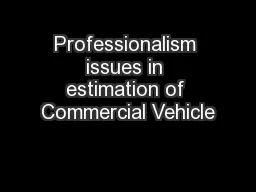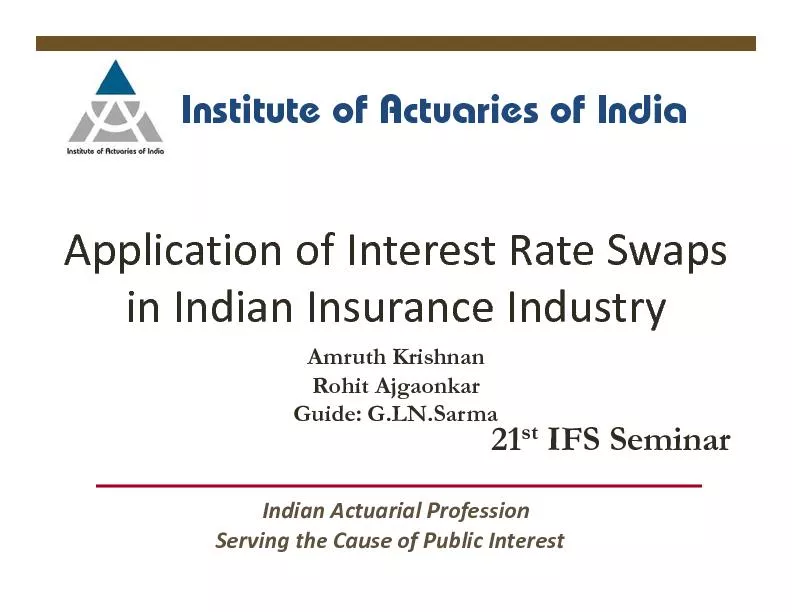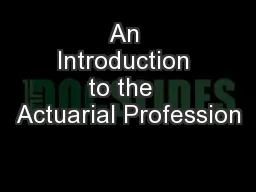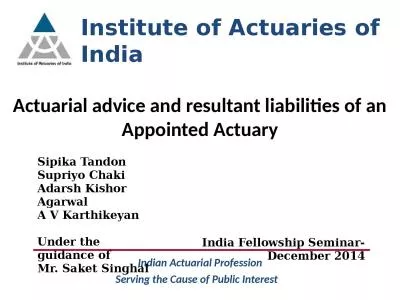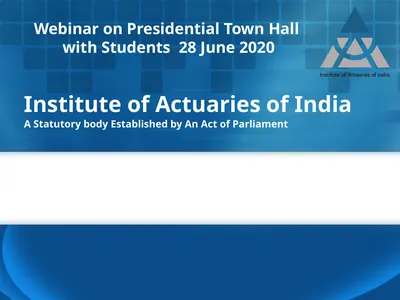PPT-Institute of Actuaries of India
Author : roy | Published Date : 2023-10-31
Ind AS 109 Financial Instruments October 2016 1 Introduction 1 Classification and Measurement 3 Derivatives and Hedge Accounting 2 Impairment and Derecognition
Presentation Embed Code
Download Presentation
Download Presentation The PPT/PDF document "Institute of Actuaries of India" is the property of its rightful owner. Permission is granted to download and print the materials on this website for personal, non-commercial use only, and to display it on your personal computer provided you do not modify the materials and that you retain all copyright notices contained in the materials. By downloading content from our website, you accept the terms of this agreement.
Institute of Actuaries of India: Transcript
Download Rules Of Document
"Institute of Actuaries of India"The content belongs to its owner. You may download and print it for personal use, without modification, and keep all copyright notices. By downloading, you agree to these terms.
Related Documents


